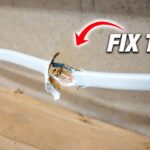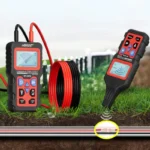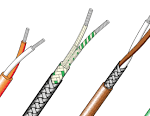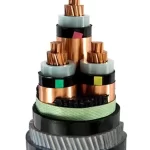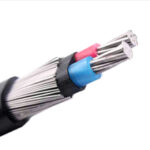A copper ground rod is an essential component of any electrical grounding system. Designed to safely dissipate electrical surges into the earth, it protects homes, buildings, and equipment from lightning strikes, electrical faults, and static charges.
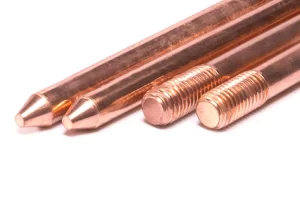
Copper Ground Rods
At TOT Wire & Cable, we supply both solid copper ground rods and copper-clad steel ground rods to meet different performance and budget needs.
⭐ Key Features
High Conductivity Copper Layer – ensures excellent current dissipation
Durable Steel Core (for copper-clad type) – provides high tensile strength for easier driving into the ground
100% Solid Copper Option – maximum corrosion resistance and conductivity
Industry Standard Compliance – UL 467, IEEE Std 80, NEC requirements
Versatile Applications – electrical grounding, lightning protection, electric fences, and more
🔍 Product Specifications
| Type | Material | Diameter | Length | Standard | Applications |
|---|---|---|---|---|---|
| Solid Copper Ground Rod | 100% Electrolytic Copper | 5/8”, 3/4” | 8ft, 10ft | UL 467, IEEE 80 | Residential grounding, lightning protection |
| Copper-Clad Ground Rod | Steel core with copper bonded layer | 5/8”, 3/4” | 8ft, 10ft | UL 467, IEEE 80 | Residential, commercial, industrial, electric fence |
📚 Frequently Asked Questions (FAQ)
Q1: Are ground rods solid copper?
A1: Ground rods come in two types:
Solid Copper – made entirely of copper, with excellent conductivity and long-term corrosion resistance. They are more expensive but ideal for highly corrosive soil.
Copper-Clad Steel – feature a steel core for strength and a bonded copper layer for conductivity. They are more cost-effective and widely used in residential and commercial grounding.
Q2: What size ground rod do I need?
Most building codes require an 8-foot long, 5/8-inch diameter ground rod for residential use. Larger facilities may require 10 ft or multiple rods depending on soil resistance and NEC standards.
Q3: What tools do I need to install a ground rod?
The most effective tool is a ground rod driver, which can be used with a hammer drill or rotary hammer. A heavy sledgehammer can also be used for manual installation.
Q4: Do I need clamps for the ground rod?
Yes. A ground rod clamp securely connects the grounding conductor (usually bare copper wire) to the ground rod. Choose a UL-listed brass or bronze clamp that matches your rod diameter.
Q5: How many ground rods do I need for an electric fence?
For electric fences, multiple ground rods are often required, spaced at least 10 feet apart. A typical setup uses 3 copper-clad ground rods to ensure effective grounding and fence performance.
🏠 Applications
Residential Electrical Grounding – protect household appliances and occupants
Lightning Protection Systems – safely dissipate lightning strikes into the ground
Electric Fences – maintain effective and reliable current flow
Commercial & Industrial Facilities – provide grounding for large-scale power systems
🔗 Related Products
Ground Rod Clamps – UL-listed copper/brass clamps for secure connections
Ground Rod Drivers – tools for quick and safe installation
Bare Copper Ground Wire – for connecting rods to electrical panels or fences
📞 Call to Action
Looking for a reliable copper grounding rod supplier?
At TOT Wire & Cable, we offer solid copper and copper-clad steel ground rods at competitive prices, with fast delivery and bulk order discounts.

